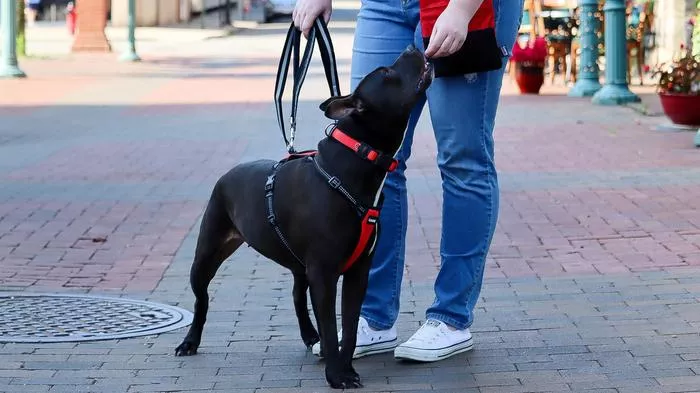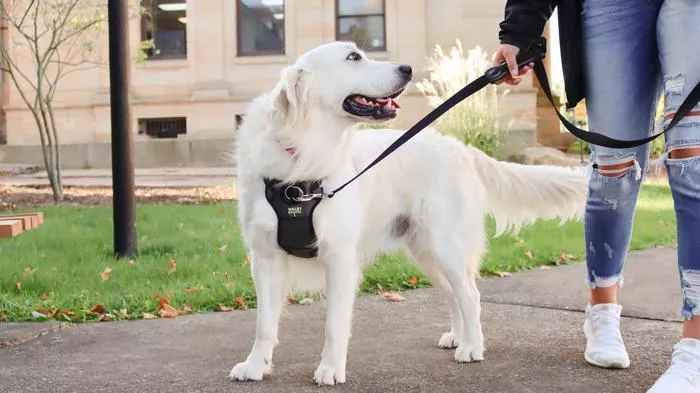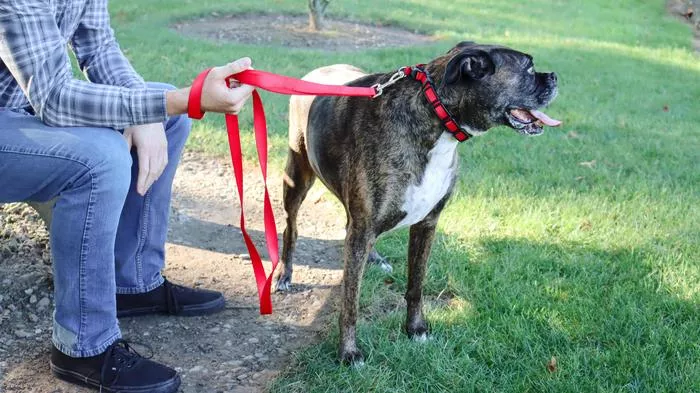Written by Steven Appelbaum, President – Animal Behavior College
Many of you might not realize this, but February is National Dog Training Education Month and Responsible Pet Owners Month. In addition, February 27th is International Polar Bear Day, and as a professional animal trainer, President of Animal Behavior College, and passionate animal lover, I want to comment on all three.
International Polar Bear Day
Who knew?! My advice regarding polar bears is don't try to train one. They will eat you. No, you are not their first lunch choice, but they will eat you, so put the leash and treats away! These are magnificent creatures with an important place in the grand scheme. They deserve our respect and enough awareness that we allow them places of their own. The world is a big place with room for all of its creatures. I have seen them in the wild, and it's awe-inspiring.
Dog Training Education Month and Responsible Pet Owners Month
What better way to celebrate these fabulous events than to offer tips on training?
Ok, cash might be better, or free dog food for a year, but that's not happening, so tips it is!
I am asked all the time, what's the best advice you can give for new pet parents with dogs in need of some training?
1. Focus on teaching your dog what you want them to do instead of what you don't. Many pet parents are very clear about behaviors they don't like. While it makes sense not to want your dog to chew up your couch or use the bedroom floor as a bathroom, if your focus is on trying to correct or stop unacceptable behavior as opposed to encouraging desired responses, the communication and relationship you have with your pet will not be as positive as it could be. Instead, teach and reward the dog for going to the bathroom in the right place, learn how to fixate the dog on chewing their toys instead of your furniture, and those desired behaviors will strengthen.

2. Be patient and consistent. Training doesn't happen overnight. You don't learn things overnight, do you? Maybe you do. I don't, and I have convinced myself I am like most people. Teaching and modifying new behaviors take time, repetition, and patience. Your dog will not be house-trained in 2 days, and teaching a dog to be obedient can take months of dedicated work. What's more, you must offer your dog a consistent message. If jumping all over you is acceptable on alternate Tuesdays when you are in the mood but not on other days, this won't be very clear for your pup. Set reasonable boundaries for acceptable behavior and have all family members who are capable of helping to teach the boundaries to assist. Training might not take a village, but it takes a family unless it's just you. Then it takes you being consistent.

3. Exercise is a great idea. But first, ensure you and your dog are healthy enough to make this a habit. You don't have to go crazy—just a nice walk 3-5x per week. Start slow and build up. My Basset Hound is almost 14 years old, and we walk 2 miles just about every day. He loves it, and it's good for both of us. By the way, whenever I give "training tips" and mention exercise, someone wonders what walking the dog can do to assist in training. It’s a fair question. First, training falls into roughly two categories. The first is problem-solving and behavior modification. Think, jumping on family and guests, chewing, digging, puppy nipping, stealing food from counters or trash receptacles, running out of doors and gates, house-training, excessive barking, etc. Will walking solve all of these behaviors? Nope, but it will help with a surprising number of them. I have had clients with dogs who took digging and chewing to levels you wouldn't believe, significantly decrease those behaviors by giving the dog more exercise. The truth is that exercise is one of the tools pet parents can use and is great for both parents and pooches. The second category of training is obedience. Think of cues like sit, stay, come, down, and walking well on a leash. Obedient dogs are easier to handle and take in public places, listen better around distractions, and are thus safer. It's much easier to take your dog to the groomer or veterinarian or for a walk to the park or in the neighborhood if they aren't dragging you down the street and tangling you up in their leash when they see another dog. Basic exercise can calm some dogs down and make them easier to train. It’s for all these reasons and more, that exercise makes my tips list.

4. Work with a professional dog trainer. Even if you have had dogs in the past and have a good idea of how to teach them, a group class for socialization and teaching the dog to listen around lots of distractions is a great thing to do. For those first-timers, don't worry; everyone was a first-timer once. Find a trainer and watch them work. Are they gentle but effective? Are they good with both people and dogs? That last one might sound strange, but I have seen fabulous trainers who weren't great communicators with people. I have also known trainers who were quite adept at talking about training with people but could have been more effective actually training dogs. You want an excellent communicator and trainer. Someone who will work with your pup but also teach you since much of the training you do with a professional will be about them teaching you how to train your dog.
5. Invest in decent training equipment. This means a good quality leather or nylon leash and proper harness or collar for training. Also, a decent collar with tags for all around wear. I know that some of you might want to use the 25-year-old leash you had for the 11-pound dog you had as a kid, when training your 80-pound strapping Labrador, but please don’t. Get quality stuff that matches the dog you are working with. I don’t mean color coordination unless you like that idea. I sort of do, but functional, quality equipment is important when training. Coastal Pet offers a variety of leash, collar, and harness types that can suit the type of dog you have and assist with training.

In closing, remember to be gentle, patient, and consistent when training your dog.
Training takes time and finding a trainer you like and trust is essential. Finally, remember exercise and a decent diet; I know I didn't mention diet before, but I did now cause it's important, and have fun.
The final close. I know I already closed this article by summarizing it above, but I have something else to add that I wanted to stand out. Cats can also be trained. Yes, you read that correctly. Cats are completely trainable although you typically train them for different things. Kitty training is less about obedience and more about behavior modification. So for those of you with feline companions who are having litter box challenges, or scratching on furniture, yowling excessively, spraying etc., there is hope. Stay tuned for more about this on a cat-oriented article perhaps to celebrate National Take Your Cat to Work Day (in June), or my personal favorite, Hairball Awareness Day in April.

Steven Appelbaum is the President of Animal Behavior College. Steve had been a professional animal trainer (he trains cats as well), for more years than he is comfortable admitting. Let’s just say that Jimmy Carter was the president when he first started. Learn more about Animal Behavior College.

